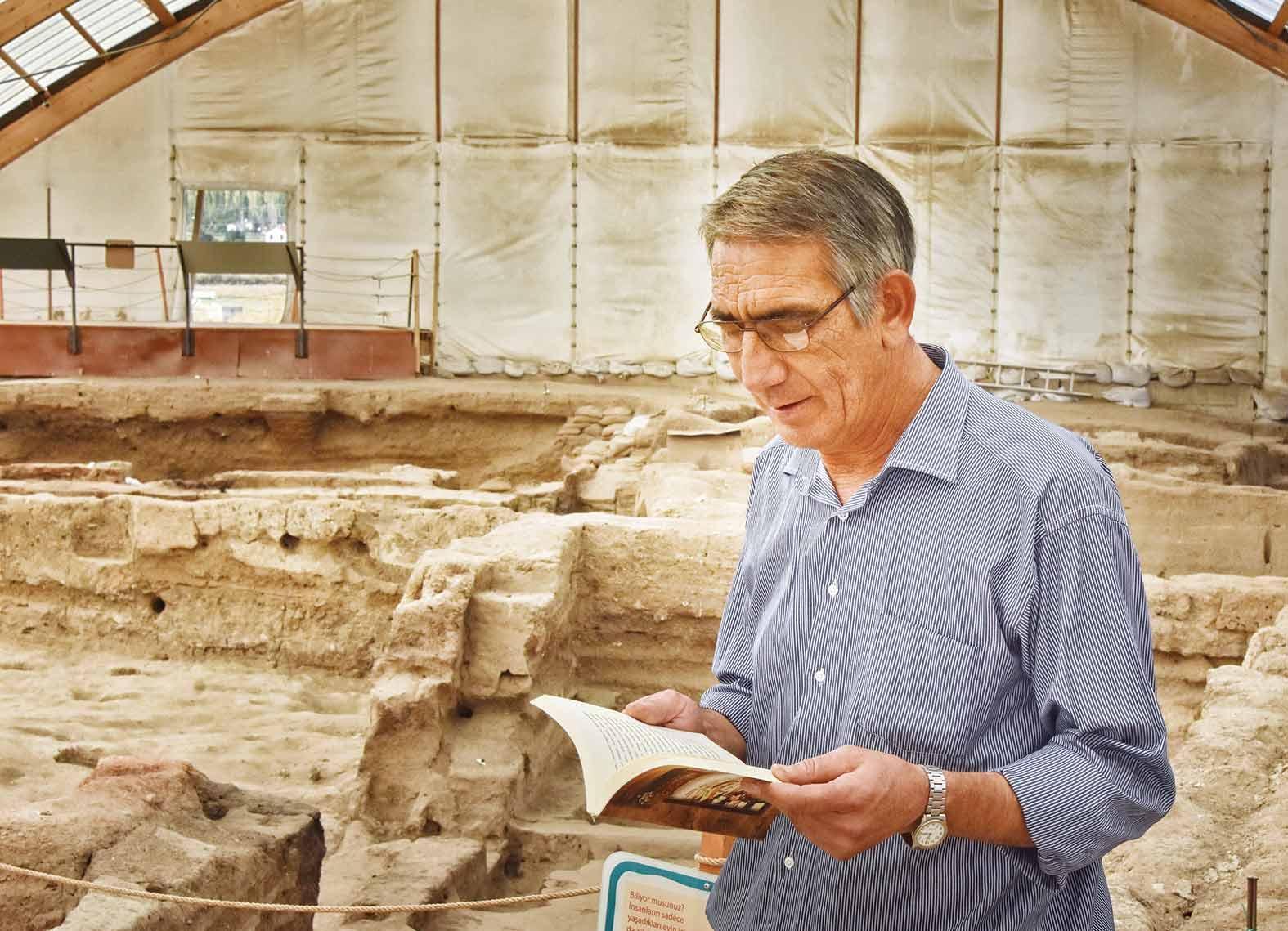
A book titled “Protecting Çatalhöyük,” written by Sadrettin Dural in 2007 on the 9,000-year-old Çatalhöyük settlement in the Central Anatolian province of Konya, has been used as a supplementary textbook at Binghamton University’s Anthropology Department. Dural now has a second book about the ancient site.
Dural was rejected by the Tourism and Culture Ministry when he applied for a funding for his book. He sold his car and took out a bank loan in order to release his second book on Çatalhöyük, where he grew up.
Born in Konya’s Çumra district and a primary school graduate, Dural worked as a watchman 24 years ago in the Neolithic settlement of Çatalhöyük, where he met Professor Ian Hodder, the head of the excavations.
He took classes on Çatalhöyük from Hodder with the help of a translator for 52 hours and then decided to write a book in which he tells about the Neolithic people and works in Çatalhöyük through the eyes of watchmen.
With Hodder’s incentive, the book “Protecting Çatalhöyük” was published in English in Chicago nine years ago. Examining the book, academics started studying it as a supplementary textbook in at the New York university’s anthropology department.
When Dural was a taxi driver before his works in Çatalhöyük, he said he had begun hating people and wanted to live in an isolated place. But as soon as he started working in Çatalhöyük, the 54-year-old said the way he viewed life had changed.
“After I started working here, I’ve met people who have no evil intent. I started thinking of what could’ve happened had I completed my education on time. But I had no chance to study again. I educated myself thanks to the people who visited Çatalhöyük. With time, these people helped me learn more, but I couldn’t do anything for these people. Then I thought that I could give information about Çatalhöyük to them. I started collecting information about Çatalhöyük. In the meantime, Hodder offered me to teach about Çatalhöyük and gave me lessons with his translator. Then I fell in love with this settlement,” he added.
Having turned his observations in Çatalhöyük into a book with the help of Hodder, Dural published his book in 2007.
“I wrote about archaeological excavations in Çatalhöyük, the problems that occurred during excavations, my life and my problems when working as a watchman. This book is still being sold on international websites. After the book was published, visitors began getting information about Çatalhöyük and it made me very happy,” he added.
Dural said the first book was not published in Turkey because the publishing house had its publication rights. But he wrote his second book in Turkey due to high interest.
“My first book was in English and I was criticized by people around me. I wrote my second book by providing anecdotes from my own life, and I featured a child who lived in Çatalhöyük in this book. I wrote a story in light of the information that Hodder gave me and the information I got there,” he said. ,
After being rejected by the Tourism and Culture Ministry to publish the second book, Dural took out a 27,000-Turkish Lira bank loan. However, the money was not enough and a second application to the bank was refused. “Then I sold my car for 22,000 liras. This is how my book titled ‘9000 bin yıl önce Çatalhöyük’te yaşam’ [Life in Çatalhöyük 9,000 years ago] has been published.”
In Dural’s village, girls are traditionally not sent to school, but he was encouraged to send his own children to school “thanks to the educated people” he met in Çatalhöyük.
“My daughter is now a history teacher and my son is a financial advisor,” he said.
Dural now runs a small market and a coffee shop in Çatalhöyük.